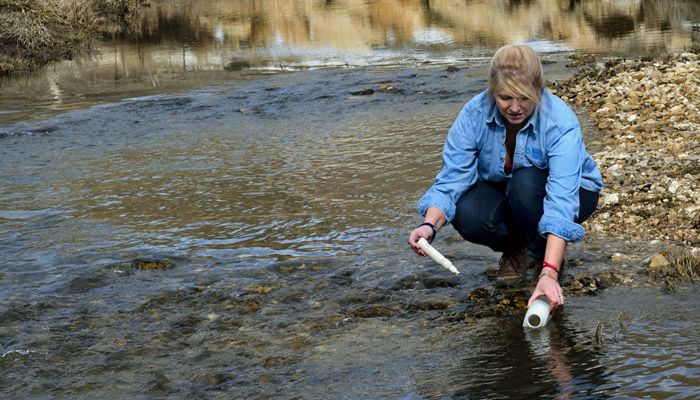
Opportunities for watershed management Overview
Our early conservation programs in Iowa and the U.S. were born out of necessity. These approaches were considered very successful and provide a historical perspective on soil erosion reduction efforts (and the reduction of phosphorus loss, as phosphorus attaches to soil particles). In the 1920s, an extended period of good weather, World War I increases in agricultural prices, and improved farm technology contributed to increased crop cultivation in the U.S. At that time, there was no much focus on conservation. But severe drought hit in 1930. The resulting Dust Bowl of the 1930s led to a federal push for soil conservation. From 1930-1934, the first Iowa soil erosion prevention demonstration projects (crop rotations, liming of soils, contouring, terracing & tree planting) and experimental station work by the USDA and Iowa State University occurred (measuring the amount of soil erosion and water losses under various cropping systems).The Soil Conservation Act passed by Congress in 1935 created the federal Soil Conservation Service. By 1938, 22 states passed legislation allowing landowners to form voluntary soil conservation districts. In 1939, the Iowa General Assembly enacted similar legislation and created the State Soil Conservation Committee (later the Department of Soil Conservation) to serve as an agency of the State. The first Iowa soil conservation districts were formed in three Marion County townships in April 1940. Today there are 100 soil districts. In 1986, the Division of Soil Conservation was formed within the Iowa Department of Agriculture & Land Stewardship. In 1987, “water” was added and they are now known as soil and water conservation districts.
We have come a long way since then, as new technology – such as no-till and strip till, terracing and increased crop residue – were developed and demonstrated. The state-federal and local partnership continues. The federal farm bill plays abig role in our successful adopting of new technology. State support is vitally important.
The long-term conservation progress by Iowa farmers is certain. In Iowa, soil erosion on cropland has decreased 26 percent from 1982 to 2012. Recent analysis by the Iowa Geological Survey shows the overall trend of phosphorus concentrations in Iowa rivers is decreasing with an average annual rate of 2.3 percent per year. They credit the great strides made by farmers and landowners in adoption of practices and structures designed to reduce runoff and sediment loss.
Iowa Nutrient Reduction Strategy and its Water Quality Initiative
Now comes the added challenged of addressing water quality and nitrates more directly through our traditional – and new – soil conservation practices and programs that focused on preventing phosphorus loss. New technology – such as constructed/restored wetlands, bioreactors and saturated buffers – is being developed and demonstrated and there are signs of early progress on nitrates, too, but this will have its own set of long-term challenges.The state’s Iowa Nutrient Reduction Strategy and its Water Quality Initiative (WQI) is off to a great start in its first two years. Farmers in 16 targeted, smaller watersheds have so far combined at least more than $11.7 million in their own private funding with $7.4 million in state money. More than 95 local organizations are participating in these projects as they set appropriate local goals, timelines, and implementation plans. Iowa’s successful, state-funded efforts have no leveraged at least $5.5 million in federal Regional Conservation Partnership Project funding that is going to 10 of the 16 WQI projects. The bulk of these dollars will be going directly to farmers to implement practices and some resources will help with technical assistance.
State and Federal Funding Sources, Programs Available
With this background, you can review these slides to learn more about at least 12 state and federal funding sources and their 14 programs available to individual farmers or organized watershed projects to further reduce soil erosion and phosphorus loss, and the more recent challenge of addressing nitrate loss, too. Your county Soil and Water Conservation District can help prioritize the programs most applicable to your local needs and goals. Also, review the specific practices at this link recommended by Iowa State University to most effectively reduce nitrogen and phosphorus loss.Click here to download a .pdf file.
Disclaimer: This document is intended for general informational purposes only and is not meant to provide legal advice for your specific situation or to infer an attorney-client relationship. Please contact your legal representative with any questions regarding your rights and available options. This document was last updated December 9, 2015 and may not reflect the most recent changes in the law. For additional information, contact your county Farm Bureau office.